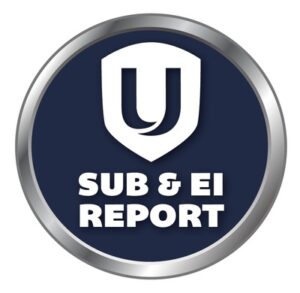Monday August 24th 2020, Liberals unveil $37B for CERB/ERB transition to new benefits, EI changes.
CERB/ERB
Under the old rules, workers could only apply for a maximum of six of the program’s seven four-week eligibility periods. This meant those who had been continuously eligible for the CERB/ERB since the first period starting on March 15th were set to run out of benefits by the end period of August 29th The new rules would extend CERB/ERB eligibility from 24 weeks to another four-week period, or 28 weeks in total.
EI CHANGES
Anyone eligible for EI will get $400 minimum for at least 26 weeks and will need to have worked 120 hours (approximately 3.5 weeks) to qualify, well below current EI requirements. Normally, applicants stand to receive 55 per cent of their average weekly earnings, up to a ceiling of $573, but there is no minimum on how little they can get, since many Canadians have been unable to work due to the pandemic.
New Canada Recovery Benefits
For workers who don’t qualify for EI, the federal government is creating three new temporary benefits: the Canada Recovery Benefit for the self-employed and others who don’t meet the bar for EI; the Canada Recovery Sickness Benefit, for those who are sick with COVID-19 or must self-isolate because of the virus; and the Canada Recovery Caregiving Benefit, for those who can’t work because they are caring for a child or dependent because of school and other facilities’ closures linked to the pandemic.
All three benefits will be administered by the CRA, with applications opening in October and applicants able to simply attest that they qualify for the programs, as with CERB/ERB. Also like the current emergency benefits, the new payments will be taxable.
The Canada Recovery Benefit: will provide $400 a week, the same as the minimum weekly benefit under the modified EI, for up to 26 weeks. Recipients will have an obligation to be available for work and look for employment while on the benefit. However, they will be able to earn up to $38,000 in annual net income from employment or self-employment while receiving payments. Beyond that threshold, they will have to repay 50 cents for every additional dollar earned, like EI recipients need to do when working while on claim.
The benefit is available only to workers who stopped working or saw their incomes reduced because of COVID-19, raising questions about whether Canadians who became unemployed before the pandemic and aren’t eligible for EI would be able to access these payments.
The Canada Recovery Sickness Benefit: will provide $500 per week for up to two weeks for workers who do not have access to other types of paid sick leave. As with CERB/ERB, applicants will be able to submit an attestation that they qualify for the benefit.
The Canada Recovery Caregiving Benefit: will provide $500 per week per household for up to 26 weeks and is also attestation-based. Families who choose not to send their children to reopened daycares and schools will not be eligible for the benefit.
However, if parents receive advice by a medical professional to keep their kids home due to underlying health conditions that heighten the risks linked to COVID-19, they will be able to receive payments, a senior government official said.
Most of the EI changes and the three new benefits will kick off on September 27th, 2020 and remain in force for one year, according to senior government officials.
For More information and reports click here SUB EI REPORTS or call, text, email or stop into the benefits office to see me – Vincent Filice, or my alternate Adam Nie for any updates regarding these transitions.
In Solidarity,
Vincent Filice – SUB/EI Representative Adam Nie – ALT. SUB/EI Representative
In Plant: 905-641-6419 Mobile: 905-658-7781 Email: vincent.filice@gm.com
In Solidarity,
Vincent Filice
Sub/EI Representative
Unifor Local 199
GM St. Catharines Propulsion Plant
Office: 905 641 6419
Cell : TBA
E-mail: vincent.filice@gm.com

